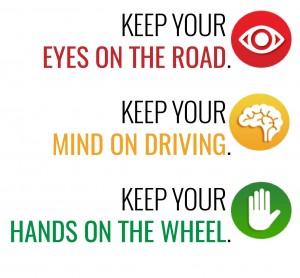Multitasking Impairs Performance
We can safely walk while chewing gum in a city crowded with motor vehicles and other hazards. That is because one of those tasks – chewing gum – is not a cognitively demanding task.
People do not perform as well when trying to perform two attention-demanding tasks at the same time. Research shows even pedestrians don’t effectively monitor their environment for safety while talking on cell phones. The challenge is managing two tasks demanding our cognitive attention.
Certainly most would agree that driving a vehicle involves a more complex set of tasks than walking. The brain is behind all tasks needed for driving: visual, auditory, manual and cognitive. Recent developments in functional magnetic resonance imaging (fMRI) now allow researchers to see the brain’s reactions to specific challenges and tasks.
What are possible prevention steps?
Eliminating driver distraction due to cell phone use faces significant challenges, even  beyond combating drivers’ desire to be connected and productive. Drivers can
beyond combating drivers’ desire to be connected and productive. Drivers can
help avoid this by informing frequent callers that they will not participate in phone conversations while driving. When facing multiple demands for their cognitive attention, drivers may not be aware they are missing critical visual information, and they may not be aware of the full impact of that oversight. This lack of awareness of the distraction could prolong it. Widespread education is needed about the risks of hands-free devices, conversation and cognitive distraction.
But even when people are aware of the risks, they tend to believe they are more skilled than other drivers, and many still engage in driving behaviors they know are potentially dangerous. Prevention strategies should consider how people behave in reality, not only how they should behave. We know from other traffic safety issues – impaired driving, safety belts, speeding – that consistent enforcement of laws is the single most important effective strategy in changing behavior. Therefore, prevention strategies that may show the most promise are legislative and corporate policies, coupled with high-visibility enforcement and strict consequences. Technology solutions can go even further by preventing calls and messages from being sent or received by drivers in moving vehicles. To provide safety benefits and provide a positive influence on reducing crashes, injuries and deaths, these efforts – including education, policies, laws and technology – must address the prevention of both handheld and hands-free cell phone use by drivers.
Information From: http://www.nsc.org/DistractedDrivingDocuments/Cognitive-Distraction-White-Paper.pdf
To learn more traffic safety tips visit the Safe Communities Website.

